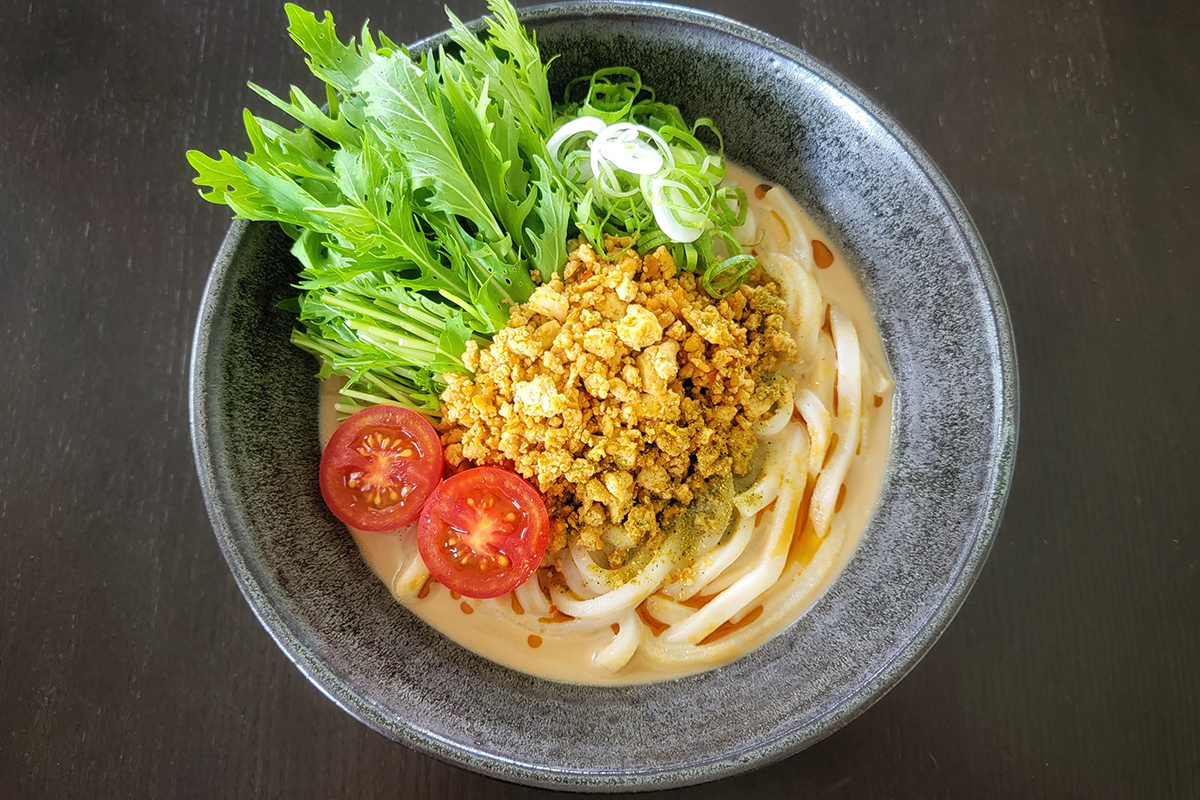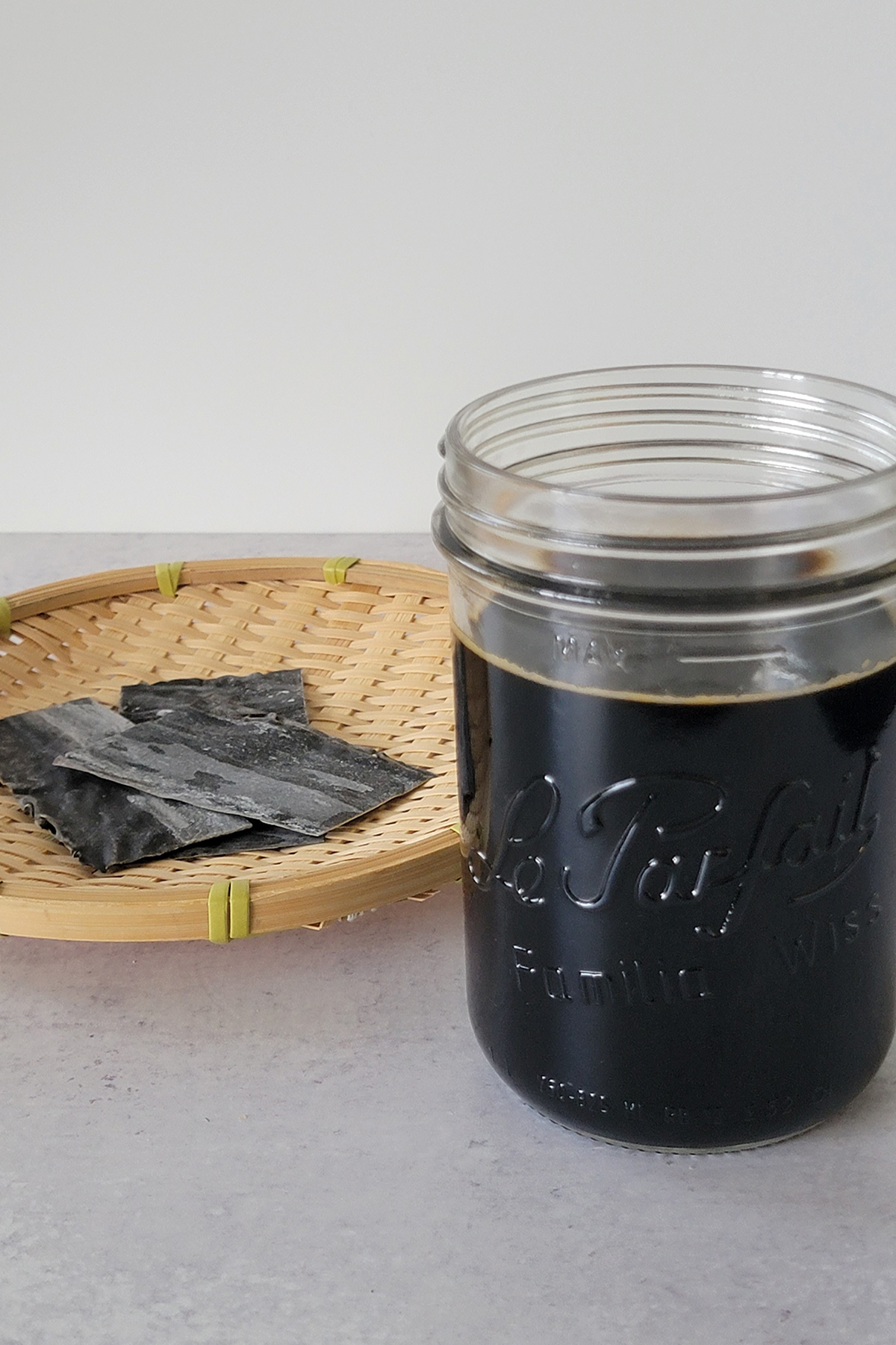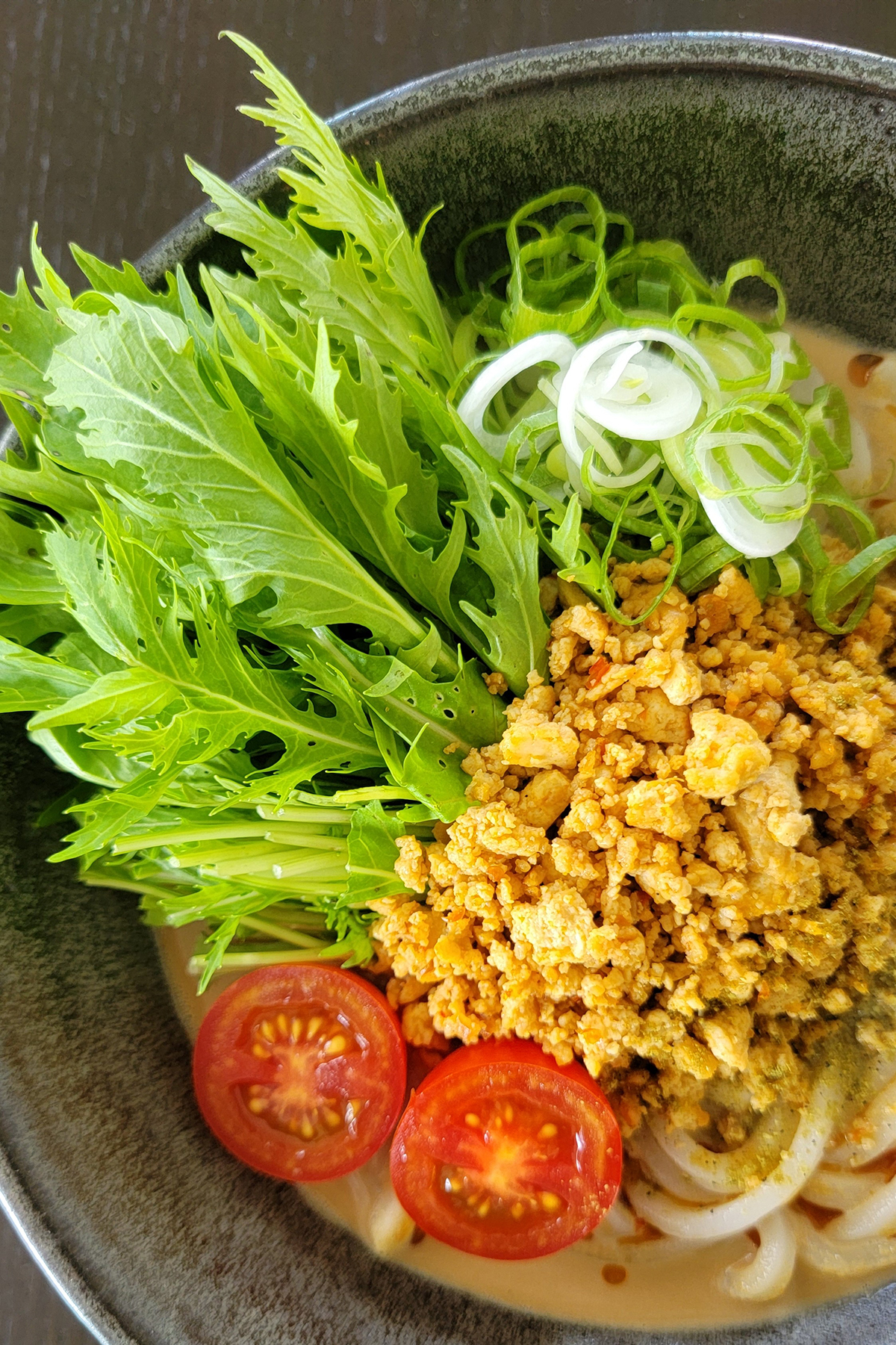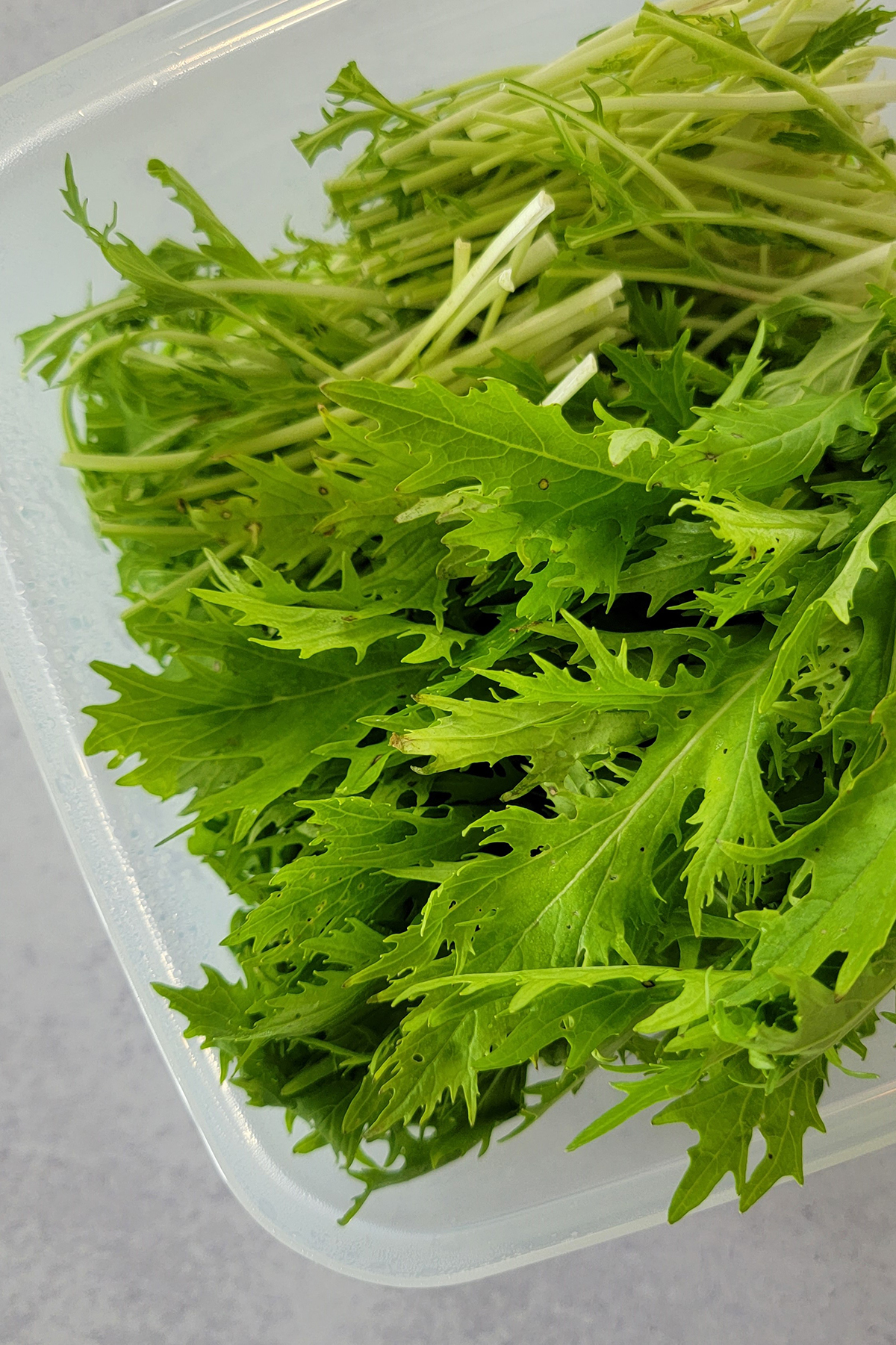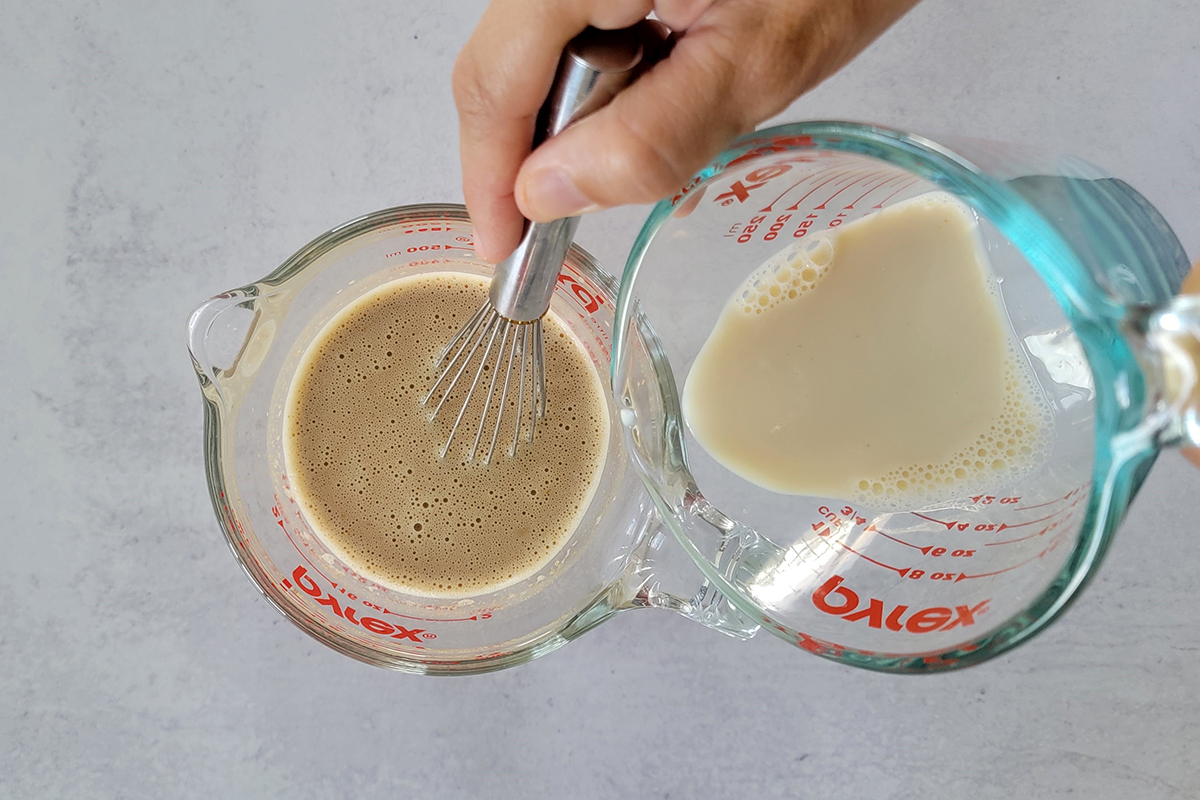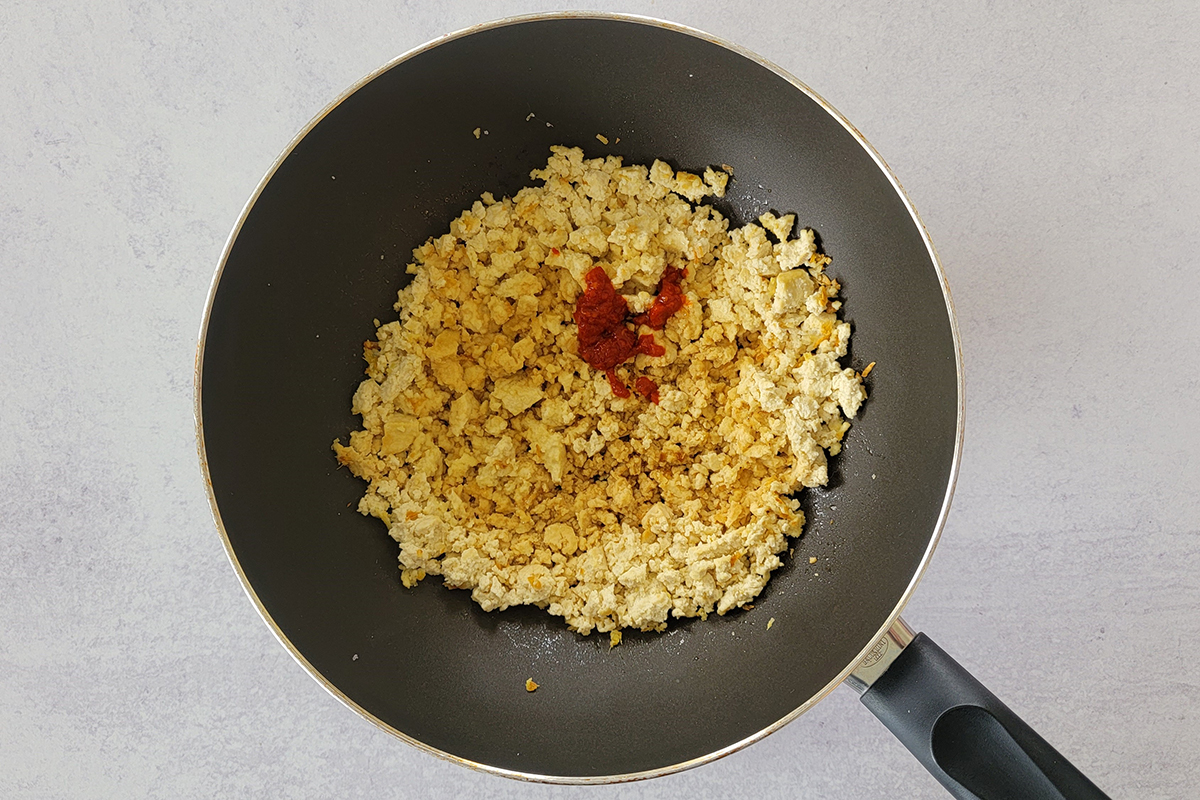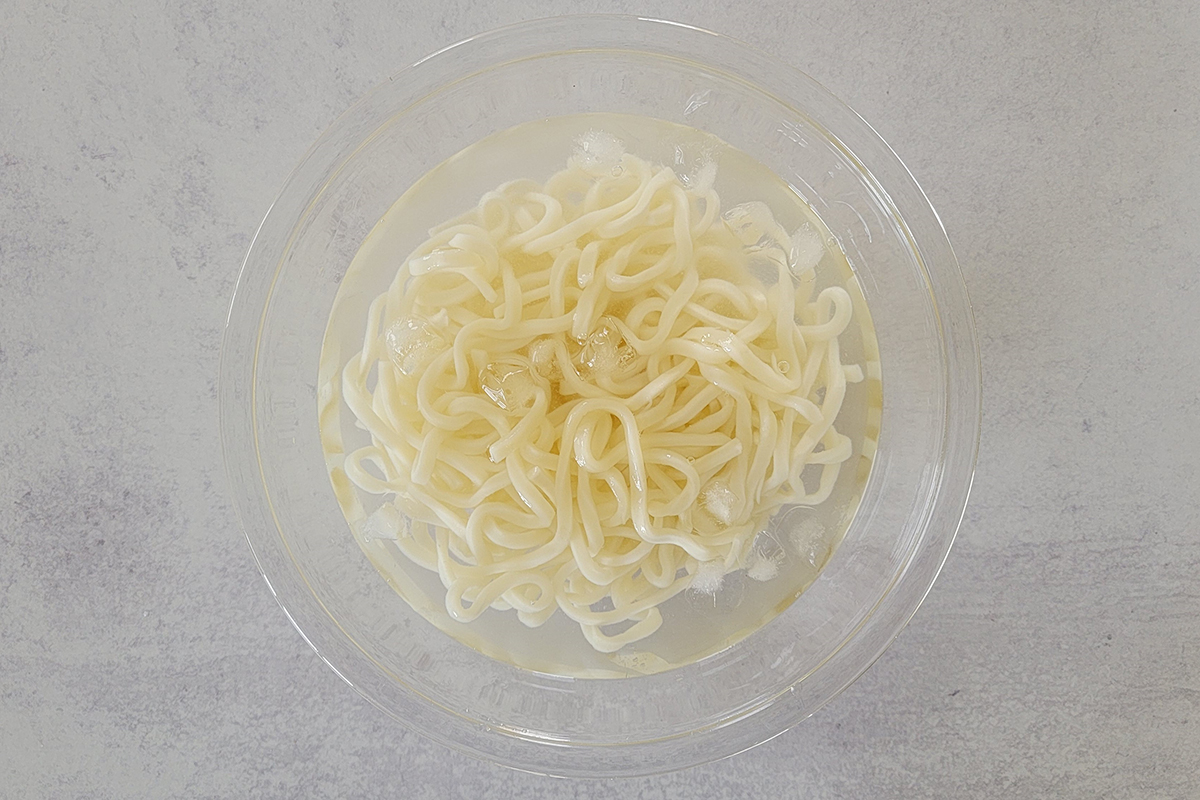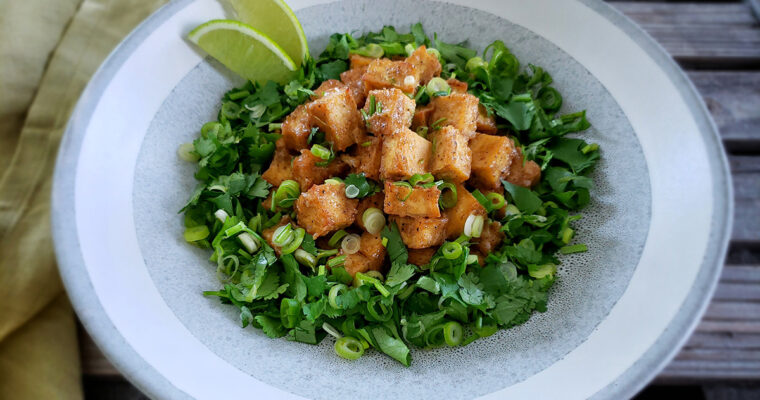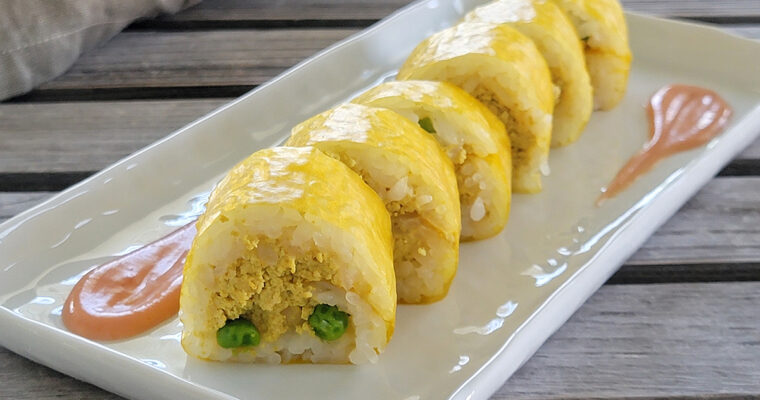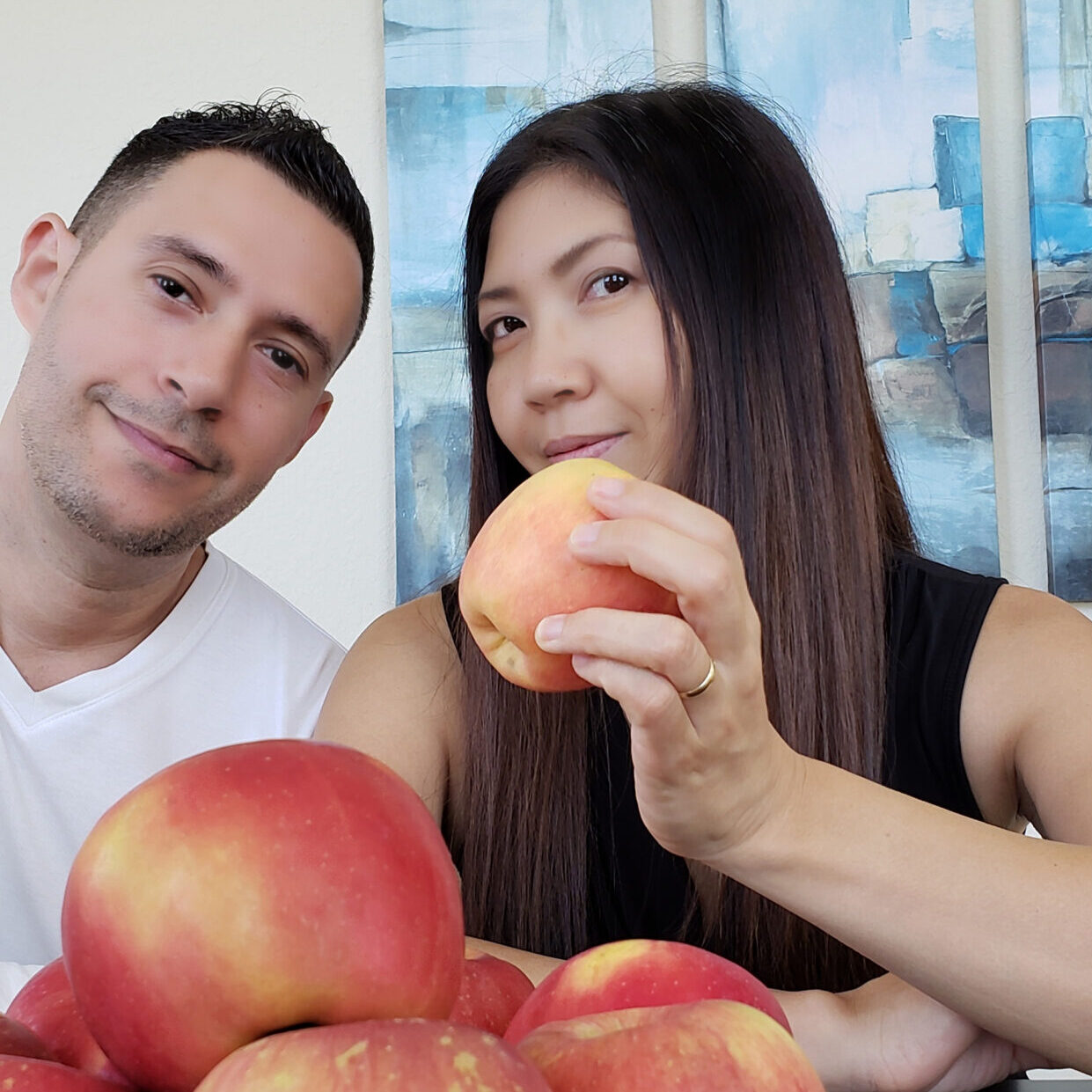Last Updated on June 3, 2023
[ヴィーガン冷やし豆乳々うどん]
Vegan Cold Tan Tan U担don is a vegan arrangement of the Japanese noodle dish “tan tan men (ramen)” but made with udon noodles in cold, creamy and rich soymilk based spicy sesame broth. The delicious broth is made with kombu dashi based homemade vegan mentsuyu that gives umami and depth to the flavor.
Story Behind The Cold Tan Tan Udon
This is one of the recipes that I’m so glad I made because I truly love tan tan noodles of all kinds. The satisfying texture of chewy noodles, the creaminess of the roasted (toasted) sesame seed paste, the comforting broth, the savory and spicy toppings and refreshing bites from veggies, they all are complimented by spicy chili oil!
Actually, I made this vegan cold tan tan udon not intended to actually make it into a recipe. One day, I was craving Japanese style cold udon noodles so I posted my non-recipe weekend cooking IG reel making this vegan cold tan tan noodles…then, it has turned out to be the most asked for recipe!
So, whoever asked for the recipe, the wait is over!
Well, who wouldn’t love eating chewy udon noodles in a cold rich spicy sesame broth? I used to eat tan tan noodles ALL THE TIME (I say at least once a week) when I lived in Japan.
Vegan Cold Tan Tan Udon is a variation of the warm Japanese tan tan noodles that’s served with cold creamy soymilk based sesame broth with spicy toppings and condiments. I purposely aim for this dish to be authentically Japanese but vegan friendly at the same time. So, it calls for specific ingredients and extra steps to achieve that taste that I look for.
If you want to make something similar with more accessible ingredients with fewer steps, I’d suggest you to check out Vegan Cold Ramen with Sesame Sauce.
Japanese Tan Tan vs Chinese Dan Dan
You might be thinking what’s tan tan? Not dan dan?
There is a Japanese ramen dish called “tan tan men [担々麵]” which is a Japanese interpretation of the Chinese dan dan noodles. Just like the original dan dan noodles, Japanese tan tan men is also a spicy noodle dish but there’s a major difference in between the two:
- Dan dan noodles = No Broth
- Tan tan men = With Broth
Unlike the Chinese dan dan noodles which is oil-based with no broth, the Japanese tan tan men comes with a rich sesame miso or soy sauce based hot (warm) broth.
Now, a typical tan tan men consists of:
- Ramen noodles
- Rich sesame miso or soy sauce based broth
- Seasoned ground meat
- Spicy oil
- Scallions
Just like any other ramen dishes, typical tan tan men is not vegan but very easy to make it vegan friendly. I keep my vegan cold tan tan udon to taste as authentic as possible with a delicious vegan twist.
Also, as mentioned, my vegan cold tan tan udon is a hybrid of the Japanese tan tan men made with udon noodles and cold broth.
Actually, I’m not the original creator of tan tan udon. In Japan, tan tan udon is quite a popular dish to make at home during summer to switch from making tan tan men with ramen noodles.
With this recipe, you can now enjoy the Japanese cold tan tan udon, the vegan way!
What’s in Vegan Cold Tan Tan Udon?
Here is a list of main components of the Vegan Cold Tan Tan Udon.
- Sanuki-style thick udon noodles
- Creamy & rich soymilk based sesame broth made of vegan mentsuyu
- Savory & spicy tofu crumbles
- Mizuna for a fresh & crunchy bite
- Juicy seasonal cherry tomatoes
- Scallions
- Rayu (Japanese chili oil) for an aromatic & spicy kick
From of all the above, there are some key components that have the important role to contribute to the overall experience of this vegan cold tan tan udon.
- Thick Udon
- Broth
- Tofu
- Rayu
Let’s get into them!
Thick Udon Noodles
You should use Sanuki-style thick udon noodles for this recipe. This specific type of udon has a great chew especially when it’s prepared cold. Other types of udon noodles just don’t work the same.
You can find frozen sanuki-style thick udon noodles at your local Asian grocery stores. They’re pre-cooked so it takes only a minute or so to cook in hot water!
Broth
The broth is very important for this recipe. I make it with:
- Neri Goma (Japanse sesame paste)
- Vegan Mentsuyu
- Unsweetened Plain Soymilk
Neri Goma:
Neri goma is made with roasted sesame seeds which gives rich, nutty, and more complex flavor. Don’t use tahini for this recipe because we want to go for the authenticity. Instead, Chinese sesame sauce “zhi ma jiang” should work the same as neri goma.
I use Organic Golden Sesame Paste from The Japanese Pantry.
Vegan Mentsuyu:
Vegan mentsuyu is a vegan friendly multipurpose noodle soup base. You can use my recipe which is very easy to make and it stores well in the fridge. There’s no substitution.
Soymilk:
In Japanese cooking, incorporating soymilk isn’t anything new or exclusive to vegans. In fact, soymilk is a popular alternative to conventional milk as a healthier option. Soymilk not only creates the richness to the broth but also works very well with other Japanese flavor profiles, in this case the sesame paste and the mentsuyu.
I use Organic Unsweetened Edensoy (soymilk) from Eden Foods.
Tofu Crumbles
Seasoned tofu crumbles replace the traditional non-vegan meat element of the tan tan noodles. It’s savory, spicy and slightly sweet that adds volume to the tan tan udon as well as the extra flavor.
I use super firm tofu to give a satisfying texture and cook with ingredients including light soy sauce, sake, mirin, sugar, tobanjan (Japanese doubanjiang), and sansho pepper powder.
Tobanjan is a Japanese version of the Chinese doubanjiang which gives the spiciness and the complex flavor of the fermented chili bean paste.
In addition to the heat from tobanjan, using sansho pepper powder gives a citrus-like aroma and a mild numbing effect.
Rayu
Rayu [辣油] is Japanese chili oil which is simply made of oil and hot chili peppers. Although, it’s mainly used for Chinese food in Japan, rayu is considered as a very common “Japanese” condiment.
Add a drizzle of rayu before eating for the tasty & aromatic heat! You can easily find rayu at Asian grocery stores or most online retailers. However, I recommend the one made with sesame oil.
Many rayu products are made with canola oil or other flavorless oil but some are made with sesame oil. When you taste those two different types, you’ll know that they taste completely different because the one with sesame oil clearly has the aroma that we want!
I use Chili-Infused Sesame Oil from Umami Insider.
Fresh Accents on Vegan Cold Tan Tan Udon
Scallion
You can’t have udon without scallion. It’s a classic topping for any Japanese noodles!
Cherry Tomatoes
Tomatoes seem to be one of the common toppings for any Japanese cold noodles. I also use it on my cold ramen with sesame sauce. It doesn’t really determine the overall flavor but it definitely adds a fresh and sweet pop to both the taste and the appearance!
Mizuna
Every cold tan tan men (ramen) or tan tan udon that I had in Japan came with mizuna as one of the toppings. So, I do the same here.
Mizuna [水菜] is Japanese mustard greens with vibrant green leaves and crunchy stems. The taste is mildly bitter which is somewhat similar to arugula. If you can find it, I’d highly recommend using it. Otherwise, you may substitute with a handful of baby arugula.
Using arugula won’t taste the same as using mizuna but arugula adds the fresh & pleasant bitterness and that’s what I do when I don’t have mizuna in hand.
Be sure to check out the “Step-by-Step Instructions (w/ Photos)” after the Printable Recipe!
Vegan Cold Tan Tan Udon
Ingredients
Creamy Sesame Broth
- 4 tbsp Japanese sesame paste (neri goma)
- 4 tbsp Vegan Mentsuyu use my recipe
- 240 ml cold unsweetened plain soymilk
Seasoned Tofu Crumbles
- 1/2 tbsp neutral oil
- 2 cloves garlic minced
- 1 inch ginger knob peeled and minced
- 1/2 block super firm tofu
- 1 tbsp light soy sauce (usukuchi shoyu) (1 tbsp = 1/2 tbsp regular soy sauce + 1/4 tsp sea salt)
- 1 tbsp sake
- 1 tbsp mirin
- 1/2 tbsp cane sugar
- 1 tsp tobanjan (Japanese doubanjiang) adjust to taste
- 1/8 tsp sansho pepper powder
- 1 tsp toasted sesame oil
Cooking Udon Noodles
- 2 blocks frozen thick sanuki-style udon
- Enough water to submerge frozen udon noodles
Condiments & Toppings
- 1 scallion finely chopped
- 2-3 cherry tomatoes or grape tomatoes halved
- A handful of Japanese mizuna or baby arugula roughly chopped
- Rayu (Japanese chili oil)
Optional (Extra) Condiments & Toppings
- Extra sansho pepper powder
- Toasted sesame seeds optional
- Rice vinegar optional
- Extra toasted sesame oil optional
Instructions
- First, prepare the Creamy Sesame Broth. In a measuring cup or prep bowl, combine Japanese sesame paste (neri goma) and mentsuyu. Use a whisk to mix well. Then, add soymilk little by little and stir well until well-blended. Transfer to the fridge and keep it chilled until serving.
- Next, prepare the Seasoned Tofu Crumbles. Heat up a non-stick surface frying pan at medium high heat. Pour oil then add garlic and ginger. Cook for 1-2 minutes until aromatic.
- Add tofu into the pan by crumbling it over the pan then stir for 1-2 minutes. Then, add light soy sauce, sake, mirin, cane sugar, and tobanjan then mix well. Continue to cook (stir occasionally) until tofu becomes golden brown and slightly crispy on the outside. Right before removing from the heat, add sansho pepper powder and toasted sesame oil. Give a quick stir then transfer to a plate or a shallow bowl to cool down. Set it aside until assembling.
- Start boiling water in a saucepan or medium pot for cooking udon noodles. Meanwhile, have all the toppings & condiments ready for assembling.
- Once water is boiling, add frozen udon noodle blocks and cook for a minute hot (or follow the instructions on the package) until noodles are separated and hot. Once the noodles are done, use a colander to drain and rinse immediately with cold running water to stop cooking and to remove starch. Shake off the excess water.
- Prepare an ice bath and transfer the udon noodles to the ice bath to shock them. Drain again and shake off the excess water.
- To assemble, place the udon noodles in the bowl then pour the creamy sesame broth. Add the seasoned tofu crumbles, scallions, tomatoes, Japanese mizuna or baby arugula, and rayu. Optionally, use extra condiments & toppings of your choice.
Notes
Neri Goma
- Neri goma is Japanese sesame paste that’s made with roasted sesame seeds which gives that rich flavor and the color.
- I use Organic Golden Sesame Paste from The Japanese Pantry.
- If you can’t find neri goma, subsitute with Chinese sesame paste. Using tahini will not taste the same.
Vegan Mentsuyu
- Mentsuyu is concentrated Japanese noodle soup base. It’s such a versatile ingredient that you can make cold noodle dipping sauce and hot noodle soup for udon, somen and soba. You can also use it as multipurpose seasoning for cooking and more.
- Use my Vegan Mentsuyu Concentrated Noodle Soup Base recipe.
- Important: There is no substitution recommendation of mentsuyu since mentsuyu has all the flavors; savory, sweet, and umami all in one.
Choice of Soymilk
- Be sure to use UNSWEETEND & PLAIN soymilk with no vanilla or any flavors.
- I use Organic Unsweetened Soymilk from Eden Foods.
Choice of Tofu
- For this recipe, super firm tofu (vacuum-sealed package with less water) would be perfect because there’s no need to press the tofu.
- Super firm tofu also has a good chewy texture when cooked.
- Otherwise, use extra firm tofu and press the tofu for 20 minutes or so to squeeze the excess water prior to cooking.
Sansho Pepper Powder
- Sansho peppercorns are unique Japanese pepper with aromatic and almost citrusy flavor along with some numbing effect.
- The powder form of sansho pepper is more common in typical Japanese cooking. Also, it’s a common ingredient for Japanese tan-tan noodles (tan-tan men.)
- I use Sansho from The Japanese Pantry.
Sake
- Sake adds a hint of sweetness and gives more complex flavor, umami, and the aroma.
- The alcohol content needs to be cooked off.
- Be sure to look for vegan-friendly sake. I use Organic Junmai Sake from Hakutsuru.
Mirin
- Mirin is Japanese sweet cooking rice wine which adds a natural sweetness and depth to the flavor.
- The alcohol content needs to be cooked off.
- Genuine mirin would be the best. Otherwise, use high quality mirin with no high fructose corn syrup.
- I use Organic Genuine Mikawa Mirin from Nijiya Market or Organic Genuine Mirin from Gold Mine Natural Foods.
Tobanjan
- Tobanjan is a spicy condiment/sauce that’s made of fermented chili and broad beans.
- It’s a Japanese version of the traditional Chinese ingredient, doubanjiang .
- I use Tobanjan called YOUKI Shisen Tobanjan. You can find it at Asian grocery stores and online.
Sugar
- I use cane sugar for this recipe and cooking in general.
- Using other sweeteners such as agave syrup, maple syrup and coconut sugar etc., will not taste the same.
Choice of Udon Noodles
- For this recipe, I recommend using sanuki-style udon which is thick and chewy.
- Usually, you can find sanuki-style udon in the freezer section of Asian grocery stores.
- Frozen udon is precooked so it takes only a minute or so to be ready.
- I use frozen Shirakiku Sanuki-Style Udon.
Mizuna
- If you can find Japanese mizuna, I highly recommend using it as a topping. It’s crunchy, refreshing and slightly bitter which is a perfect match with the Vegan Cold Tan-Tan Udon.
- You can use baby arugula as a substitute.
Rayu
- Rayu is Japanese chili oil which gives an aromatic & spicy kick.
- If possible, use the rayu made with sesame oil which is more aromatic.
- I use Chili-Infused Sesame Oil from Umami Insider.
Optional Condiments & Toppings
- Extra sansho pepper powder: It gives extra numbing effect and the aroma.
- Toasted sesame seeds: See my Irigoma (Toasted Sesame Seeds) recipe.
- Rice vinegar: It adds an interesting tangy taste to the broth.
- Extra toasted sesame oil: For more toasty sesame seed aroma.
Step-by-Step Instructions (w/ Photos)
1. First, prepare the Creamy Sesame Broth.
In a measuring cup or prep bowl, combine Japanese sesame paste (neri goma) and mentsuyu. Use a whisk to mix well (Note: the photo below (to the right) shows the neri goma & mentsuyu mixture before mixing.)
Then, add soymilk little by little and stir well until well-blended. Transfer to the fridge and keep it chilled until serving.

2. Next, prepare the Seasoned Tofu Crumbles.
Heat up a non-stick surface frying pan at medium high heat. Pour oil then add garlic and ginger. Cook for 1-2 minutes until aromatic.

3. Add tofu into the pan by crumbling it over the pan then stir for 1-2 minutes.
Then, add light soy sauce, sake, mirin, cane sugar, and tobanjan then mix well.
Continue to cook (stir occasionally) until tofu becomes golden brown and slightly crispy on the outside.
Right before removing from the heat, add sansho pepper powder and toasted sesame oil.
Give a quick stir then transfer to a plate or a shallow bowl to cool down.
Set it aside until assembling.

4. Start boiling water in a saucepan or medium pot for cooking udon noodles.
Meanwhile, have all the toppings & condiments ready for assembling (Note: condiments are not shown in the photo below.)
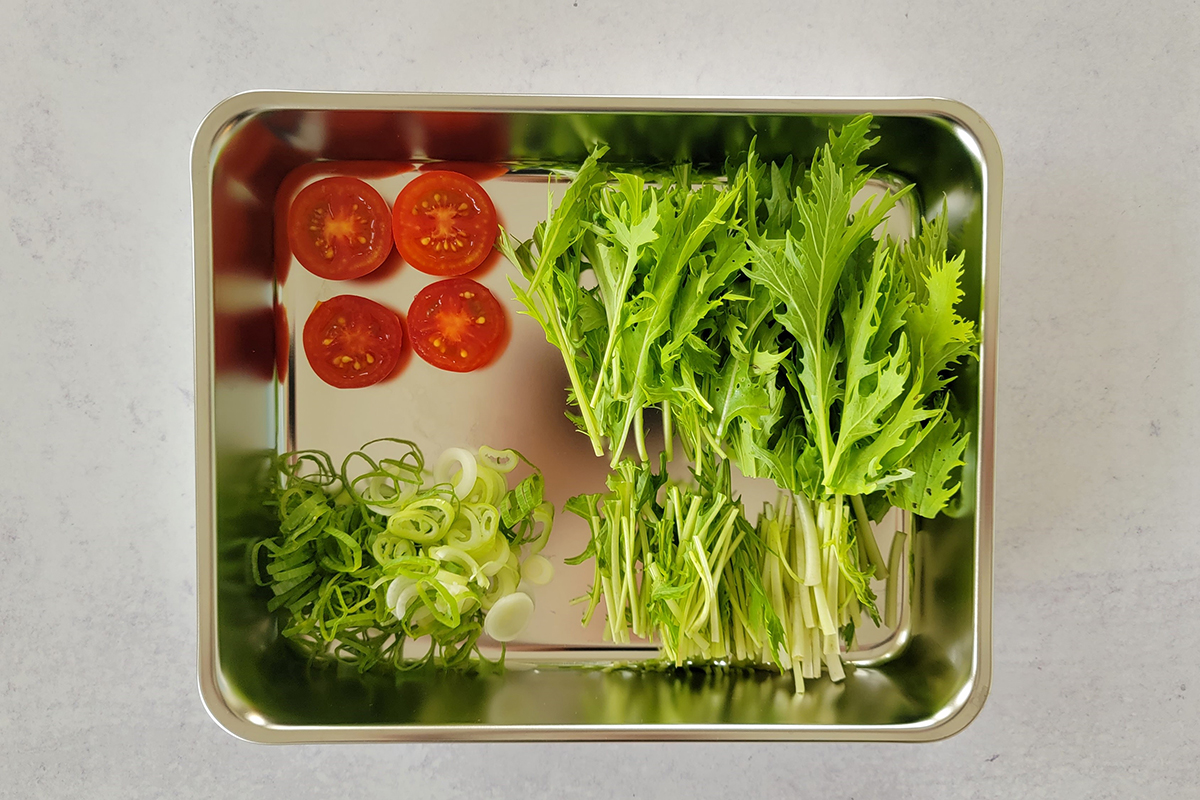
5. Once water is boiling, add frozen udon noodle blocks and cook for a minute hot (or follow the instructions on the package) until noodles are separated and hot.
Once the noodles are done, use a colander to drain and rinse immediately with cold running water to stop cooking and to remove starch. Shake off the excess water.
6. Prepare an ice bath and transfer the udon noodles to the ice bath to shock them.
Drain again and shake off the excess water.

7. To assemble, place the udon noodles in the bowl then pour the creamy sesame broth. Add the seasoned tofu crumbles, scallions, tomatoes, Japanese mizuna or baby arugula, and rayu. Optionally, use extra condiments & toppings of your choice.
If you enjoy the recipe, please share, leave a comment below and tag us @plantbased_matters on Instagram! We appreciate your kind support 🙂
